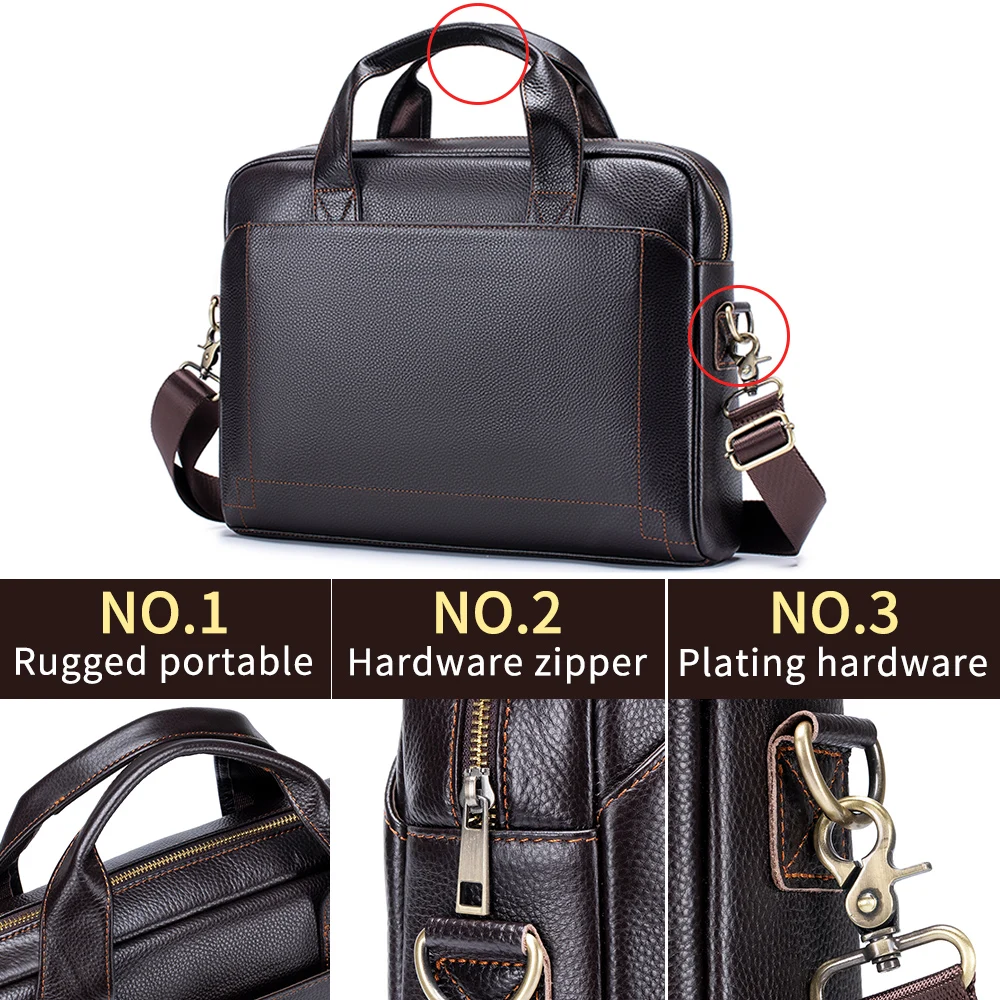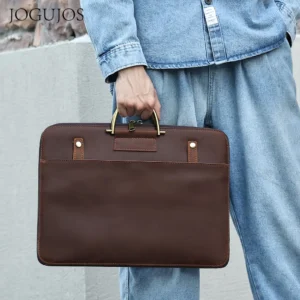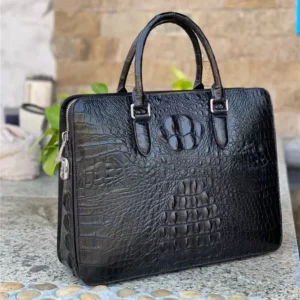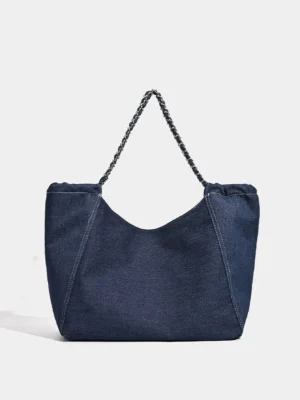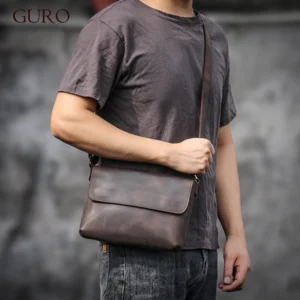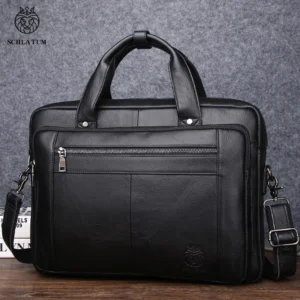Introduction: Making the Right Material Choice for Your Professional Bag
Choosing the perfect work bag involves more than just finding something that looks good. For modern professionals, the material debate often comes down to two classic options: canvas or leather. This choice affects not only how your bag looks but also how it functions in your daily professional life, how long it lasts, and what message it sends to colleagues and clients.
The right material choice reflects your professional identity while meeting practical needs. A bag that’s perfect for a creative director might not suit a corporate attorney’s requirements, and a consultant who travels frequently needs different features than someone with a fixed office.
In this comprehensive guide, you’ll learn:
- How canvas and leather differ in durability, appearance, and maintenance
- Which material better suits specific professional environments
- The true cost comparison when considering long-term use
- Practical care requirements for both materials
- How to select the right option for your specific career needs
While quality leather bags often last 10+ years and typically start at $200, canvas alternatives might offer 5+ years of service at a starting price closer to $80. But durability and price are just the beginning of the considerations that should inform your choice.
Throughout this article, we’ll provide an objective comparison of these two professional staples to help you make the most informed decision possible. The fundamental differences between leather and canvas materials affect everything from appearance to functionality in professional settings.
Quick Comparison: Canvas vs. Leather at a Glance
Before diving into the details, let’s examine how these materials stack up against each other across key attributes that matter to professionals.
| Attribute | Canvas | Leather |
|---|---|---|
| Durability | Good (3/5) | Excellent (5/5) |
| Tear Resistance | Moderate (3/5) | High (4/5) |
| Abrasion Resistance | Good (3/5) | Excellent (5/5) |
| Weight | Light (5/5) | Heavy (2/5) |
| Water Resistance | Variable (2-4/5) | Poor-Moderate (2/5) |
| Maintenance Required | Low (4/5) | High (2/5) |
| Professional Appearance | Casual-Moderate (3/5) | Excellent (5/5) |
| Initial Cost | Affordable (4/5) | Expensive (2/5) |
| Long-term Value | Good (3/5) | Excellent (5/5) |
| Sustainability | Variable (3/5) | Variable (3/5) |
| Flexibility | High (4/5) | Moderate (3/5) |
| Aging Characteristics | Shows wear (2/5) | Develops patina (5/5) |
| Best For | Creative fields, casual environments, weight-conscious commuters | Traditional business, client-facing roles, long-term investment |
This table provides a quick reference point, but each attribute deserves deeper consideration within your specific professional context. Your daily commute, workplace dress code, and carrying needs all influence which material will serve you best.
Understanding the specific durability differences between leather and canvas bags can help you make a more informed decision about which material might better withstand your daily professional demands.
Understanding Canvas Bags: Composition and Varieties
Canvas is a plain-weave fabric typically made from cotton, linen, or hemp fibers. Its distinctive tight weave creates a sturdy, durable material that’s been used for everything from sailcloth to artist canvases—hence the name.
In professional bags, canvas appears in several varieties, each with different properties:
Untreated Canvas: The most basic form, offering a natural look but limited water resistance and more susceptibility to staining.
Waxed Canvas: Treated with wax (traditionally beeswax or paraffin), providing excellent water resistance and developing a unique patina over time. Popular for its vintage aesthetic and increased durability.
Duck Canvas: A particularly dense, heavy canvas (typically 8-15 oz per square yard) known for exceptional durability and stiffness. Often used in higher-end canvas bags.
Coated Canvas: Treated with PVC, polyurethane, or acrylic coatings for enhanced water resistance and durability. Many designer brands use proprietary coated canvas for their signature bags.
Canvas weight is measured in ounces per square yard—heavier weights generally indicating greater durability. Professional bags typically use canvas in the 12-24 oz range, with lighter weights for linings and heavier weights for exteriors.
Many assume canvas lacks durability, but quality canvas can be remarkably resilient. The combination of canvas with leather elements often creates bags that leverage the strengths of both materials while minimizing their weaknesses.
Advantages of Canvas Bags in Professional Settings
Canvas offers several compelling benefits that make it an increasingly popular choice among today’s professionals:
Lightweight Construction: Canvas bags typically weigh 1-2 pounds compared to similar leather designs weighing 3-4 pounds. This significant difference becomes apparent during daily commutes, especially for professionals who carry laptops and other equipment.
Cost-Effectiveness: Quality canvas bags generally cost 40-60% less than comparable leather options, making them an attractive option for young professionals or those testing a new style.
Style Versatility: Canvas works well in a range of professional aesthetics, from structured briefcases to casual messenger bags, allowing for more personal expression in professional settings.
Low Maintenance: Most canvas bags require minimal care—many are machine washable or can be spot-cleaned with soap and water, fitting busy professional schedules.
Weather Adaptability: Treated canvas options, particularly waxed canvas, offer excellent resistance to rain and adverse conditions—ideal for walking commuters in variable climates.
Sustainability Appeal: Especially when made from organic cotton or hemp, canvas presents an eco-friendly alternative that aligns with many companies’ sustainability initiatives.
Canvas performs particularly well in creative industries, education, technology companies, and other environments with relaxed dress codes. The notable weight difference between leather and canvas bags makes canvas particularly appealing for professionals with longer commutes or back concerns.
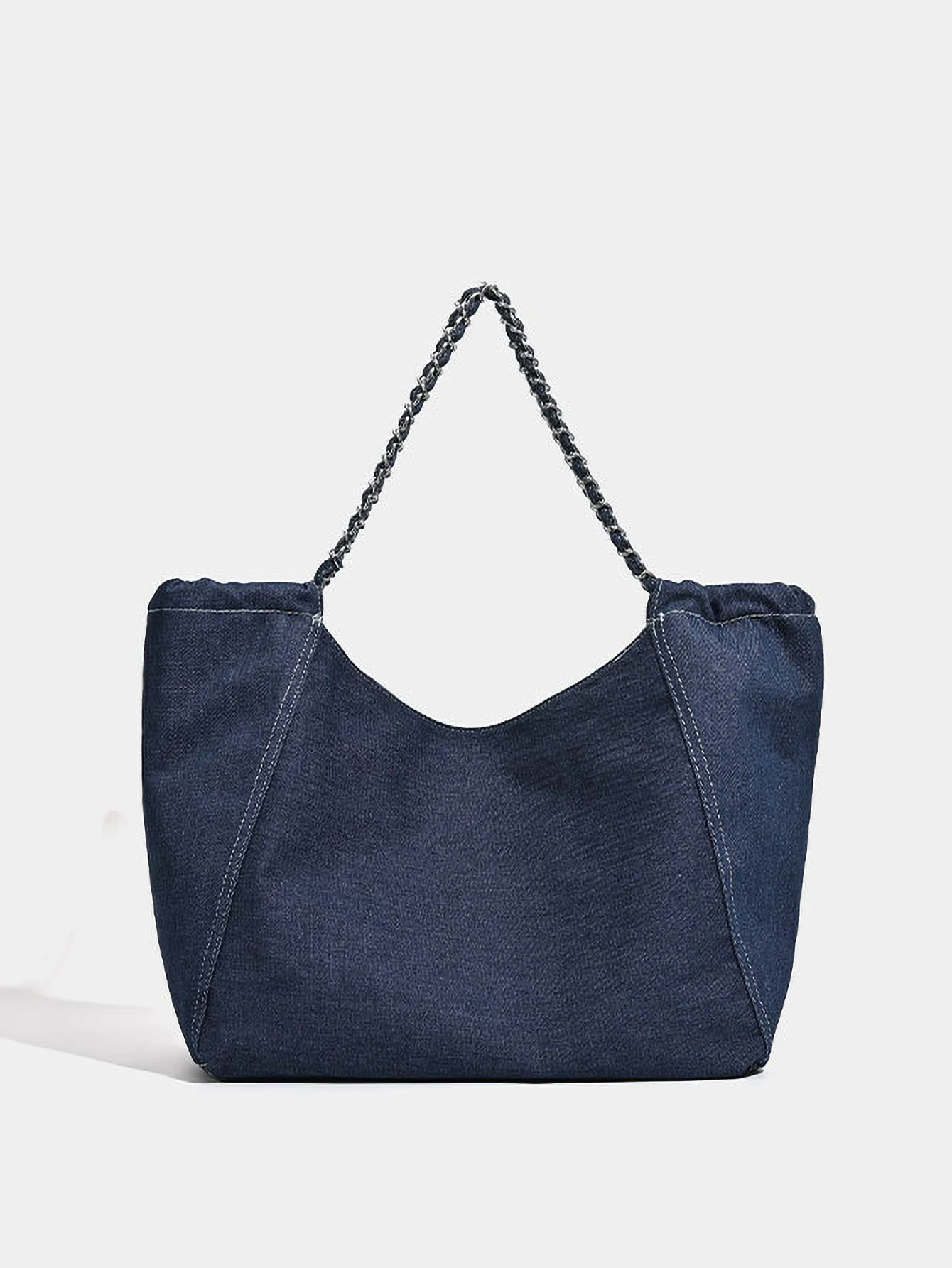
Limitations of Canvas Bags for Professionals
Despite its advantages, canvas presents several limitations that professionals should consider:
Less Formal Appearance: In traditional corporate, legal, or financial settings, canvas may be perceived as too casual for client meetings or formal presentations.
Structural Concerns: Canvas bags tend to slouch and lose shape over time, potentially creating an untidy appearance even when relatively new.
Wear Visibility: Canvas shows dirt, stains, and wear more visibly than leather, particularly at stress points like handles and bottom corners where abrasion occurs daily.
Stain Susceptibility: Especially in untreated varieties, canvas readily absorbs coffee, ink, and other office hazards, creating permanent marks that can look unprofessional.
Status Perception: In certain business contexts where subtle signaling matters, canvas lacks the prestige traditionally associated with fine leather goods.
Aging Characteristics: Rather than developing an attractive patina, canvas tends to fade unevenly and fray at edges, potentially shortening its professional lifespan.
Limited Color Retention: Canvas tends to fade with exposure to sunlight, particularly darker colors, requiring more frequent replacement to maintain a professional appearance.
These limitations are most relevant in traditional professional environments or client-facing roles where appearance details contribute to overall professional perception. For many modern professionals, non-leather work bag alternatives still provide suitable options that balance professionalism with personal preferences.
Understanding Leather Bags: Types and Quality Markers
Leather comes from animal hides that undergo a tanning process to preserve and strengthen the material. Not all leather is created equal, and the quality dramatically affects performance, appearance, and longevity in professional settings.
Key leather types used in professional bags include:
Full-grain Leather: The highest quality and most durable option, using the top layer of the hide with natural grain intact. Develops a beautiful patina over time and offers the best longevity (15-20+ years with proper care).
Top-grain Leather: The second-highest quality, where the uppermost portion of the hide is sanded to remove imperfections. More uniform in appearance than full-grain but still durable (10-15 years).
Genuine Leather: Despite the name, this is a lower grade made from layers of hide beneath the top layers. Less durable (5-8 years) and less likely to develop an attractive patina.
Bonded Leather: The lowest quality option, made from leather scraps bonded together with adhesives. Poor durability (2-3 years) and prone to peeling and cracking.
Specialty Leathers: Include bridle leather (treated with extra waxes for stiffness), shell cordovan (from horse hide, known for exceptional durability), and vegetable-tanned leather (using plant-based tannins for a more natural process).
Quality indicators in leather bags include:
* Visible natural grain patterns
* Consistent thickness throughout
* Burnished or painted edge finishing
* Even dyeing without blotchiness
* Rich, natural leather smell
Price points vary significantly based on leather quality, with full-grain leather professional bags typically ranging from $300-$800+, top-grain from $200-$500, and lower grades from $100-$300.
Understanding the specific benefits of full-grain leather bags can help professionals assess whether the premium price point delivers sufficient value for their needs.
Advantages of Leather Bags in Professional Settings
Leather offers distinct advantages that have made it the traditional choice for professional settings:
Professional Prestige: Leather projects an image of success and attention to detail—subtle cues that can influence perception in business interactions.
Exceptional Longevity: Quality leather bags often last 15-20 years or more, making them investments rather than expenses. Many professionals use the same leather briefcase throughout their entire career.
Character Development: Unlike most materials that simply wear out, leather develops a unique patina that reflects its history, becoming more distinguished and personal over time.
Superior Structure: Leather naturally holds its shape, providing better protection for contents and maintaining a professional appearance even when not fully packed.
Cross-Context Versatility: A quality leather bag transitions seamlessly between formal meetings, casual client lunches, and after-work functions without looking out of place.
Aging Enhancement: Scratches and wear that would make other materials look damaged often add character and depth to leather’s appearance.
Value Retention: Well-maintained leather bags often retain significant resale value or become heirlooms—something rarely true of other materials.
Leather particularly excels in client-facing professional roles, traditional business environments, and situations where long-term relationship building makes the subtle messages conveyed by accessories important.
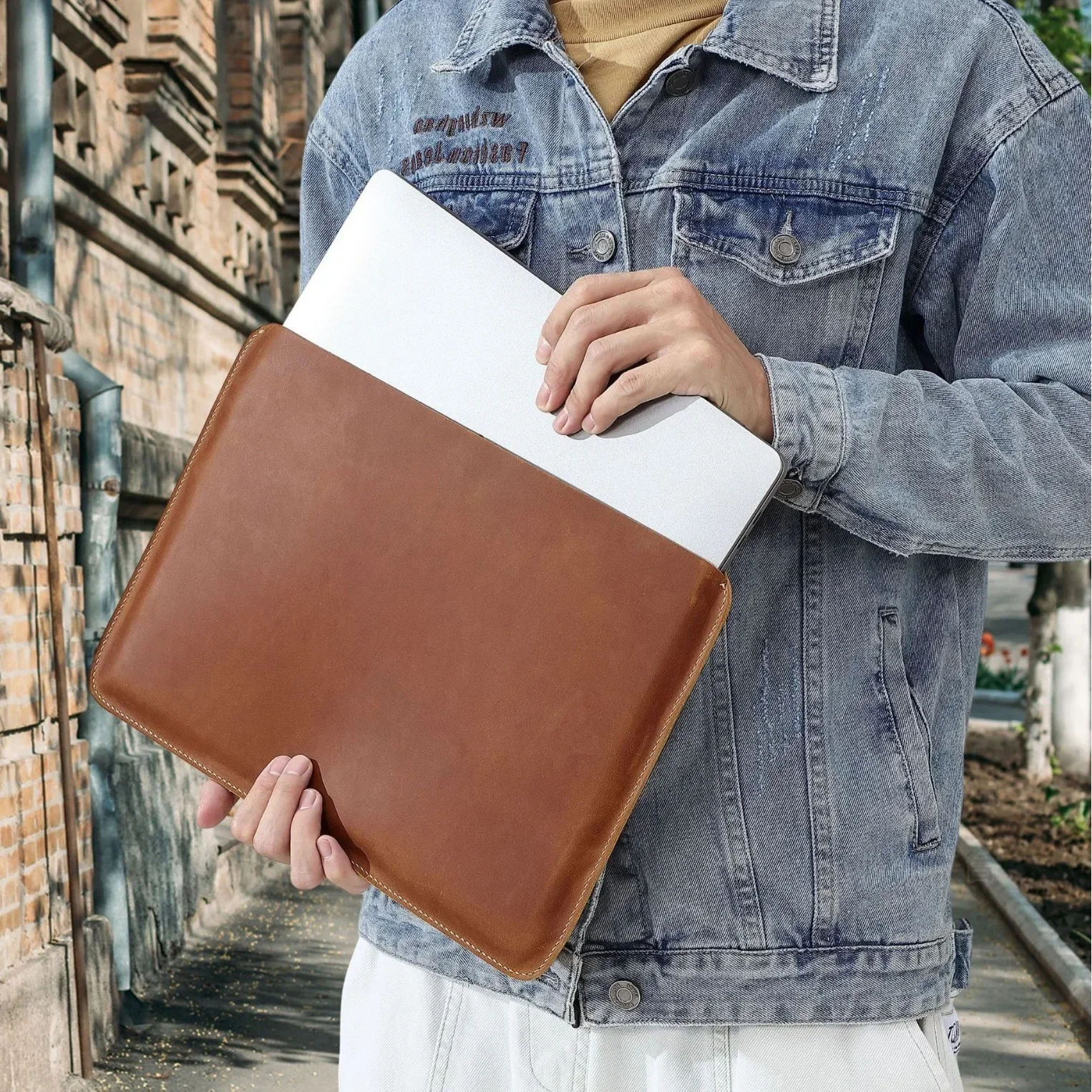
The professional elegance of leather messenger bags makes them particularly suitable for environments where appearance contributes to credibility and professional standing.
Limitations of Leather Bags for Professionals
Despite its prestigious reputation, leather presents several challenges for the modern professional:
Weight Consideration: Leather bags typically weigh 40-60% more than canvas equivalents—a significant factor for commuters or travelers carrying bags for extended periods.
Substantial Investment: Quality leather requires a higher initial investment, with professional-grade bags typically starting at $200-300 and premium options exceeding $500.
Maintenance Requirements: Leather needs regular conditioning (typically every 3-6 months), protection from extreme temperatures, and prompt attention to scratches or water exposure.
Weather Vulnerability: Even treated leather remains susceptible to water damage, requiring additional protection during inclement weather and careful drying if exposed to rain.
Ethical Considerations: For professionals with environmental or animal welfare concerns, traditional leather presents philosophical conflicts that may influence purchasing decisions.
Professional Repair Needs: When damage occurs, leather typically requires specialized professional repair rather than simple DIY solutions, adding potential costs.
Break-in Period: New leather bags can be stiff and uncomfortable initially, requiring a break-in period before achieving optimal functionality and comfort.
For professionals who travel frequently between different climates or rely on public transportation in variable weather, these limitations can impact the practicality of leather as an everyday material choice.
The classic leather briefcase remains a staple for many professionals despite these limitations, but understanding these challenges helps set realistic expectations.
Head-to-Head: Durability & Professional Longevity
When examining durability in professional contexts, both materials have distinct performance profiles:
Stress Point Performance:
Quality leather outperforms canvas at critical failure points like handles, corner seams, and strap attachments. While a canvas handle might begin fraying after 2-3 years of daily use, leather handles typically maintain structural integrity for 8-10 years before showing significant wear.
Environmental Factors:
Canvas performs better in wet conditions (especially treated varieties), while leather excels in dry environments. Professionals in rainy regions may find waxed canvas more practical, while those in climate-controlled offices benefit from leather’s long-term stability.
Usage Intensity Impact:
The durability gap widens with increased usage. For occasional use (1-2 days weekly), both materials may last similarly long. With daily use, leather’s superior tensile strength becomes more apparent, typically outlasting canvas by several years.
Professional Environment Considerations:
In high-abrasion environments (frequent travel, field work), leather’s resistance to scratching and tearing provides significant advantages. In static office environments, this difference becomes less critical.
Repair Potential:
When damage does occur, leather generally offers better repair options. Skilled leather repair can extend a bag’s professional life by 5+ years, while canvas repairs are often more visible and less durable.
For professionals carrying technology daily, the protective qualities of a dedicated laptop messenger become an important consideration regardless of material choice.
Head-to-Head: Professional Aesthetics & Image
The aesthetic impact of your bag material varies significantly across professional contexts:
Traditional Business Environments:
In law firms, financial institutions, and corporate headquarters, leather remains the expected standard for senior positions. Canvas, regardless of quality, may be perceived as too casual or junior. A survey of Fortune 500 executives found 78% carried leather bags in formal business settings.
Creative Industries:
In advertising, design, and media companies, canvas often signals creative authenticity and contemporary sensibility. Here, overly formal leather may appear stuffy or disconnected from current trends.
Tech Sector Dynamics:
Silicon Valley and tech companies have created a middle ground where either material works, though leather tends to be more common among executives and canvas among technical staff.
Dress Code Complementary:
Leather pairs naturally with formal business attire, while canvas complements business casual. The disconnect between a canvas bag and a formal suit can create visual disharmony that undermines professional presentation.
Age and Seniority Perceptions:
Rightly or wrongly, leather is often associated with seniority and established professionals, while canvas may read as more junior or casual. These perceptions vary by industry but remain relevant in image-conscious fields.
The question of whether leather or canvas provides better value depends significantly on your professional context and career trajectory.
Head-to-Head: Maintenance & Care Requirements
Maintenance requirements represent one of the starkest differences between these materials:
Daily Care Routines:
Leather requires wiping down with a soft cloth after daily use and prompt attention to any moisture exposure. Canvas generally needs no daily maintenance beyond occasional brushing for visible dirt.
Cleaning Process Comparison:
Leather cleaning involves specialized products and careful application, taking 15-20 minutes every few weeks. Many canvas bags can be spot-cleaned in minutes or even machine-washed, depending on construction.
Professional Hazard Response:
Coffee spills, a common office accident, demonstrate the difference clearly. On canvas, immediate blotting followed by spot cleaning often handles the situation. On leather, the same spill requires prompt blotting, careful cleaning with appropriate products, and potential conditioning afterward to prevent staining and drying.
Storage Requirements:
Leather needs dust covers, stuffing to maintain shape, and climate-controlled environments during extended storage. Canvas can generally be folded or stored without special considerations.
Professional Cleaning Costs:
Leather bags benefit from professional cleaning and conditioning 1-2 times yearly, costing $50-100 per service. Canvas rarely requires professional service unless heavily soiled.
For professionals concerned about maintenance requirements, understanding how to properly clean stains from leather bags becomes an essential skill for preserving their investment.
Choosing the Right Material for Your Professional Role
Different professional contexts create different requirements for your daily bag:
Corporate Executives:
For C-suite and senior management positions, leather remains the standard, particularly in client-facing roles. The investment in a quality leather briefcase or attaché case signals attention to detail and long-term thinking—qualities associated with executive leadership.
Legal Professionals:
Attorneys, especially in traditional firms, benefit from leather’s formality and document protection. Court appearances and client meetings create environments where subtle status markers matter, making leather the preferred choice despite the higher investment.
Creative Professionals:
Designers, photographers, and advertising professionals often prefer canvas or leather-canvas hybrids. These roles typically involve carrying more varied equipment and working in less formal environments where creativity is valued over tradition.
Field-Based Professionals:
Consultants, sales representatives, and others who work across multiple locations benefit from lightweight canvas for daily carrying comfort, but may maintain a leather option for important meetings and presentations.
Frequent Business Travelers:
Those regularly navigating airports and hotels often prefer durable leather that withstands handling while maintaining professional appearance. The structure of leather also provides better protection for documents and technology during travel.
Academic Professionals:
Professors and researchers typically favor canvas for its lightweight properties and casual appropriateness in educational settings, particularly when carrying books and materials between locations.
For men seeking professional-grade options, professional leather messenger bags offer a balance of functionality and executive-appropriate styling.
Beyond Material: Other Factors in Professional Bag Selection
While material choice forms the foundation of your professional bag decision, several other factors significantly impact quality and performance:
Hardware Quality:
The zippers, clasps, buckles, and feet on your bag often fail before the material itself. Look for solid brass or stainless steel hardware, YKK or RiRi zippers, and reinforced attachment points regardless of your material choice.
Construction Technique:
Stitching density (ideally 5-8 stitches per inch), reinforced stress points, and proper edge finishing indicate quality construction in both canvas and leather bags. Double-stitched seams at handles and weight-bearing areas significantly extend lifespan.
Interior Organization:
Dedicated compartments for technology, documents, and small items improve functionality. Look for padded laptop sleeves, water bottle holders, and pen slots appropriate to your daily carrying needs.
Warranty Considerations:
Quality bags often come with warranties reflecting the manufacturer’s confidence—typically 1-2 years for canvas and 5+ years for leather. These policies provide insurance against unexpected defects.
Appropriate Sizing:
Bag dimensions should accommodate your essential items without excess bulk. For most professionals, a capacity of 12-18 liters provides sufficient space without encouraging overpacking.
For professionals seeking animal-free options, vegan leather briefcases now offer increasingly convincing alternatives to traditional leather with comparable professional aesthetics.
Modern Hybrid Options: The Best of Both Worlds
The canvas-versus-leather decision isn’t always binary. Modern hybrid bags strategically combine both materials to leverage their respective strengths:
Canvas with leather trim represents the most common hybrid approach. These bags use canvas for the main body (providing lightweight comfort) while incorporating leather on handles, bottom panels, and stress points (delivering durability where needed most). This combination often costs 20-30% more than all-canvas but 30-40% less than all-leather alternatives.
Hybrid bags particularly excel in versatile professional environments where you might transition between formal meetings and more casual collaborative sessions throughout the day. They offer a middle ground that avoids both the excessive formality of full leather and the potential casualness of all-canvas construction.
Quality indicators for hybrid bags include:
* Full-grain leather on wear points and handles
* Tight, consistent stitching at material transition points
* Canvas weight of at least 16 oz for exterior durability
* Interior reinforcement at junction points between materials
Men's Classic Leather Briefcase, Slim Leather Laptop Briefcase, Slim Leather Portfolio Briefcase
$93.67 Select options This product has multiple variants. The options may be chosen on the product pageClassic Laptop Briefcase, Men's Classic Leather Briefcase, Slim Leather Attache Case
Price range: $353.50 through $360.81 Select options This product has multiple variants. The options may be chosen on the product pageBlack Leather Briefcase, Leather Document Bag, Men's Classic Leather Briefcase
Genuine Crocodile Leather Executive Briefcase with Password Lock – Premium Business Document Carrier$1,201.87 Select options This product has multiple variants. The options may be chosen on the product pageCanvas & Leather Messenger Bag, Leather Commuter Tote
$80.41 Select options This product has multiple variants. The options may be chosen on the product pageCrazy Horse Leather Satchel, Men's Leather Satchel, Men's Professional Leather Messenger, Vintage Style Messenger Bag
$132.70 Select options This product has multiple variants. The options may be chosen on the product pageBlack Leather Briefcase, Classic Laptop Briefcase, Men's Classic Leather Briefcase, Slim Leather Laptop Briefcase
$228.72 Select options This product has multiple variants. The options may be chosen on the product page
The principles behind selecting messenger bag materials apply equally to hybrid options, helping you identify quality regardless of the specific material balance.
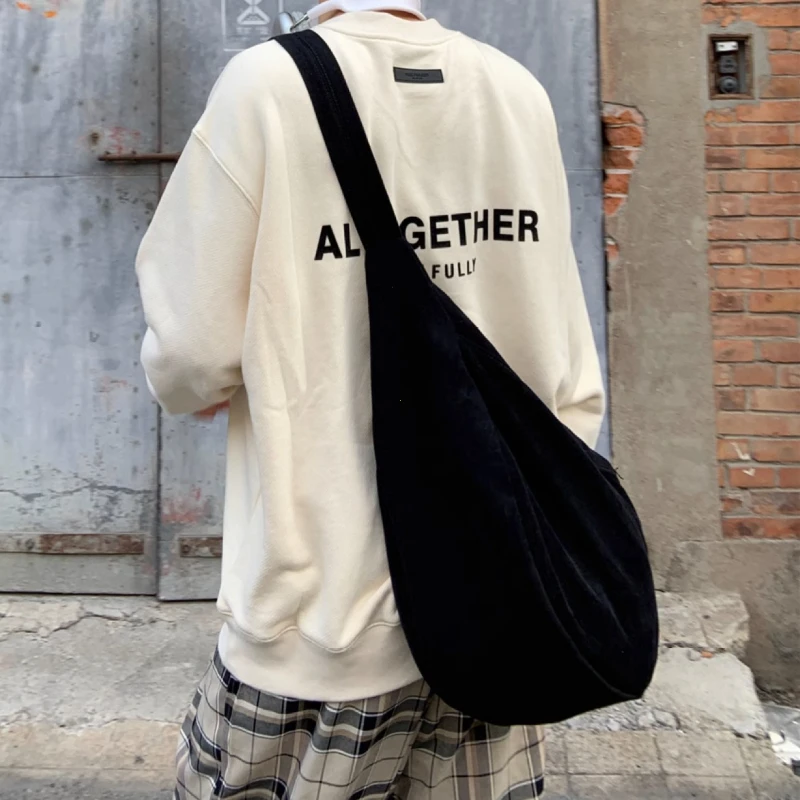
Is Canvas Professional Enough? Contexts and Considerations
Is canvas appropriate for client meetings?
In creative, tech, and casual business environments, high-quality canvas is entirely appropriate. In traditional corporate, legal, or financial settings, canvas may appear too casual unless it’s a premium version with leather trim and exceptional construction.
How can I make canvas look more professional?
Select structured canvas bags with minimal exterior pockets and clean lines. Dark colors (navy, charcoal, olive) read more professional than bright colors or patterns. Leather trim elevates canvas’s perceived value, as does visible quality hardware.
Do senior executives ever use canvas bags?
Increasingly yes, particularly in technology, media, and progressive corporate cultures. The most successful examples tend to be premium canvas from recognized brands, often with leather detailing. Even in traditional industries, canvas is gaining acceptance as workplace norms evolve.
Will my canvas bag look unprofessional as it ages?
Canvas shows wear differently than leather—fading rather than developing patina. To maintain professional appearance, choose darker canvas that hides wear, clean regularly, and be prepared to replace after 3-5 years of heavy use. Waxed canvas often ages more gracefully than untreated varieties.
The growing range of stylish messenger bags in both leather and canvas reflects the evolving acceptance of diverse materials in professional settings.
Can Leather Bags Be Sustainable and Ethical?
What makes leather production ethical?
Ethical leather comes from animals already part of the food system (rather than raised solely for hides), uses vegetable-based tanning processes instead of chromium, and maintains fair labor practices. Look for certifications like Leather Working Group (LWG) that audit environmental practices.
How does the environmental impact compare?
High-quality leather bags typically last 3-4 times longer than canvas alternatives, offsetting the higher initial environmental impact through extended use. A well-made leather bag used for 15+ years often has a lower lifetime environmental impact than multiple canvas bags purchased over the same period.
What certifications indicate sustainable leather?
Beyond LWG, look for ISO 14001 certification (environmental management standards), REACH compliance (European chemical regulation), and brand-specific transparency about sourcing and production. Companies that openly discuss their supply chain typically maintain higher standards.
Are alternative “leathers” professional options?
Modern plant-based and lab-grown leather alternatives are increasingly viable professional choices. The best versions offer appearance and performance comparable to animal leather, though longevity remains generally shorter. These alternatives particularly appeal to professionals in forward-thinking industries.
For professionals seeking ethical alternatives, vegan leather messenger bags now offer increasingly sophisticated options that maintain professional appearance standards.
Making Your Final Decision: A Practical Framework
To systematically evaluate your personal requirements, consider this weighted decision approach:
Analyze Your Professional Environment (Weight: 30%)
* How formal is your workplace?
* What do respected colleagues and superiors carry?
* How client-facing is your role?Assess Your Daily Carrying Needs (Weight: 25%)
* What items do you carry daily?
* How much protection do these items require?
* How long is your commute and what transportation do you use?Consider Your Maintenance Capacity (Weight: 15%)
* Are you willing to perform regular leather care?
* Do you need machine-washable options?
* How important is low maintenance to your lifestyle?Evaluate Your Investment Timeline (Weight: 20%)
* How long do you plan to use this bag?
* Is your career stage stable or transitional?
* Do you prefer one long-term investment or flexibility to change styles?Reflect on Personal Values (Weight: 10%)
* How important are sustainability considerations?
* Do you prefer traditional craftsmanship or modern materials?
* What aesthetic best represents your professional identity?
Before committing to a significant purchase, consider testing your material preference through a lower-cost option or borrowing a colleague’s bag for a day. Pay attention to weight comfort, organizational features, and how the material feels and performs in your specific work context.
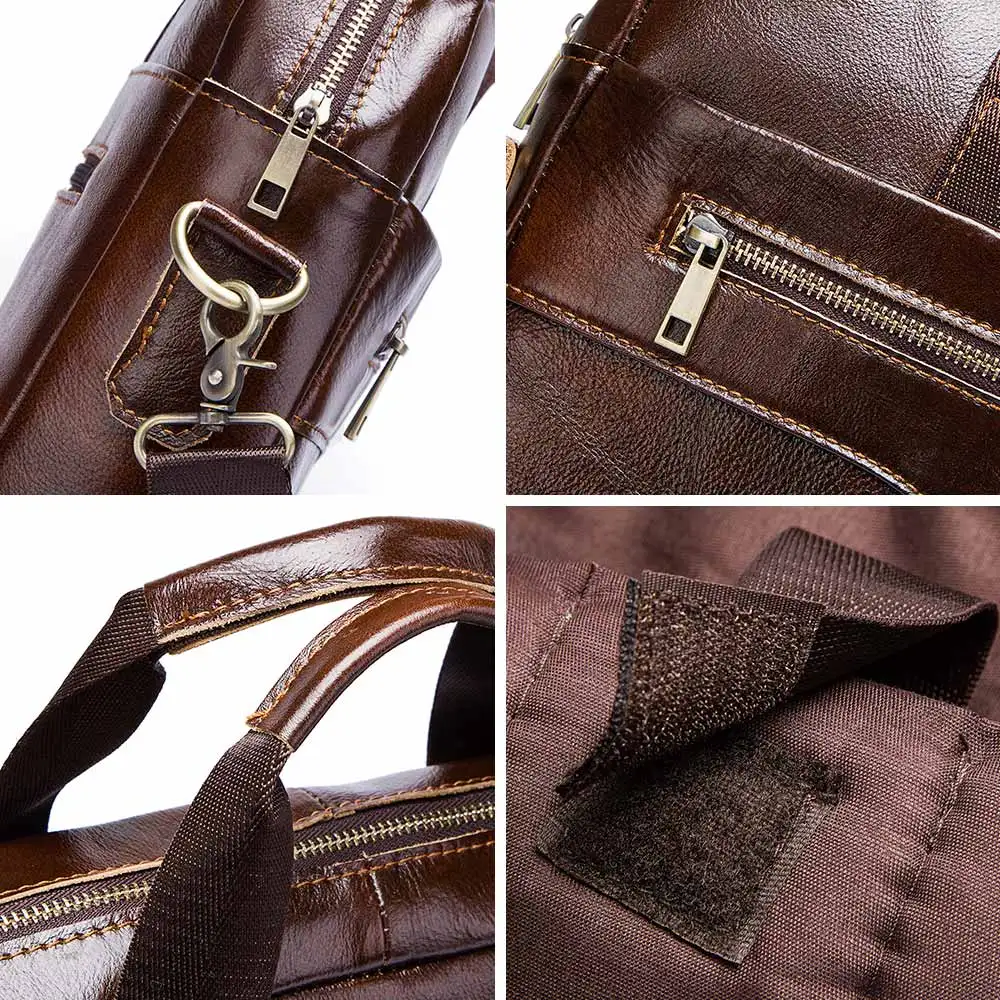
For those specifically considering messenger styles, a detailed comparison of canvas versus leather messenger bags can provide additional insights relevant to this popular professional format.
Frequently Asked Questions
How can I tell if a canvas bag is professional enough for my workplace?
Look for structured design, minimal external pockets, quality hardware, and refined details like leather trim. Dark, solid colors (navy, black, olive) read more professional than patterns or bright colors. Observe what successful senior colleagues carry as a benchmark for your environment.
Will a leather bag be too heavy for daily commuting?
This depends on your commute length and transportation method. For walks longer than 15 minutes or standing commutes on public transit, leather’s weight (typically 3-4 pounds empty) can become uncomfortable. Consider lighter-weight leather options or hybrids if weight is a concern but you prefer leather’s appearance.
Can canvas bags last as long as leather with proper care?
Generally no. Even with excellent care, quality canvas typically lasts 4-7 years of regular use before showing significant wear, while premium leather often remains serviceable for 15+ years. However, canvas’s lower cost means you could purchase multiple canvas bags for the price of one leather bag.
Is treated canvas waterproof enough for protecting professional documents?
Waxed and most coated canvas options provide excellent short-term water resistance—sufficient for commuting through rain or brief outdoor exposure. For complete protection in sustained downpours, consider adding a waterproof document sleeve inside any bag, regardless of material.
How do I prevent leather from drying out in an air-conditioned office?
Apply a quality leather conditioner every 3-4 months, increasing to monthly during winter or in very dry environments. Store your leather bag in a dust bag when not in use, and avoid placing it near heating vents or in direct sunlight which accelerate drying.
When determining if leather messenger bags are worth the investment, consider both immediate professional needs and long-term career trajectory to evaluate the return on your investment.

